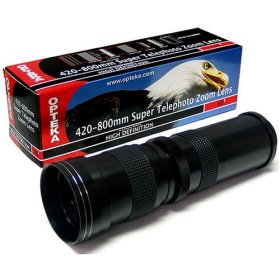Sometimes I don’t know why I do it. I get excited about the potential of a technological gizmo or geegaw and try to supercharge (a la Tim “The Toolman” Taylor) its capabilities with *ahem*, I believe the term is “budget-conscious” accessories. For example, about a year ago now, I was fooling about with an old Compaq Presario laptop computer (Windows 95 operating system and about as much memory as an absent-minded gnat) and trying to modify it in such a way that I could use a wireless PCMCIA card to connect to the Internet via our wireless router. The point was not to create an awesome computing and gaming machine; what I really wanted was a more or less portable tippy-tappy device that would basically be solely dedicated to blogging. Although I couldn’t justify the substantial expense involved in purchasing a new laptop for that purpose, I could justify spending a few bucks on a wireless card and a little bit of my time trying to bodge together a workable system. I did a bunch of research on the Internet about rescuing dinosaur machines and reclaiming them for limited purposes, I found a supplier for some replacement parts I needed to make the old machine operable (LCD screen, cable connecting motherboard to display) and managed to find a cheap and theoretically compatible wireless card on eBay. I bid on the card and won the auction, I ordered my replacement parts from Singapore, and when everything arrived all in one place, I took the machine apart, carefully re-assembled it and fired the rig up again.
Nothing.
After many hours of booting, re-booting, tweaking, re-tweaking, booting, re-booting and damn near booting the thing out the window, it slowly began to dawn on me that the claims in the wireless card manufacturer’s documentation that the device was “compatible with Windows 95” might not be entirely accurate. A little further research on the Internet suggested very strongly that the card was in fact compatible with Windows 95SE – but not Windows 95. I’ll give you three guesses which version of Windows the little laptop was not capable of running.
Undeterred in my quest, I moved into problem- solving mode: if the project was failing as a result of constraints related to the machine’s operating system, it made sense to try and change the operating system. I boldly delved into the world of Linux – an OS that I previously knew absolutely bugger all about – and determined that I might be able to make the thing work with a version of Linux known as DSL, which stands for “Damn Small Linux”. It was difficult to know for sure whether this would work, because Linux is an open source operating system – designed, built, and supported entirely by a diverse community of coders, not all of whose considerable nerdly skills are fortuitously paired with substantial linguistic abilities. The result is that the documentation available in relation to Linux is of immensely variable quality and – because of the many versions of the thing available – I found it difficult to have any confidence that I was getting the definitive word on any particular issue. Moreover, some of the stuff was just too damn dense for someone without professional IT skills to penetrate and digest without many hours of study.
Many hours of booting, re-booting, tweaking, re-tweaking, booting, re-booting and damn near booting the thing out the window, I came to the conclusion that the thing just wasn’t going to work, and that project was cast aside both literally and figuratively; the component parts were shoved underneath a couch in the computer room at our old house and there they remained, collecting dust, until we emigrated to Juniorvania. The whole pile of stuff is now sitting in my shop, silently reproaching me for my unforgivable hubris. Total cost for this portable computing version of the Tower of Babel: a couple hundred bucks worth of replacement parts, taxes, shipping and brokerage fees, a substantial number of somewhat frustrating hours of my time, and a minor bruise to my confidence in my own rationality. If I had just spent that money (and a little more) on a slightly more powerful, perhaps used, machine, I’d be typing this entry – about something else – on my little blogging device.
My point in reciting all of this (no doubt fascinating) history is really to set it out as a bit of a cautionary parable for myself. Why? You may recall that a few months ago I took the plunge and bought a digital SLR – a Canon Digital Rebel XTi, to be precise. Recently, I’ve been photographing some of the birds in the trees out back, but my Sigma 18-200 lens just wasn’t able to get me close enough to get the kind of pictures I wanted, so I started casting my eyes longingly around teh Intarwebs at things like this. Not having the inclination, skills and weaponry necessary to knock over a bank, and thus being economically ineligible to acquire such a device, I decided that I needed to come up with a Plan B. Behold:

The thing arrived last Friday, and I fiddled about with it some on the weekend. This morning, I had to scramble to fit it on to the camera because I saw some deer grazing in the field out back, quite a distance away next to the edge of the woods. So far, the biggest challenge for me is focusing on the subject with sufficient sharpness to produce an image of any clarity. My initial review of this morning’s study on the eating habits of the family cervidae indicates that most of the pictures are a tad on the blurry side. I have my severe doubts about the quality of this lens – it just can’t be any good at that, um “price point”, at least not in relation to the glass the pros use. Indeed, in general it seems to me that the images produced by this lens are noticeably “softer” (even the ones that are in focus) when compared to images produced by the Sigma, and the colours seem to be somewhat less vivid.
The question for now is whether it’s good enough – or another intransigent Compaq Presario.
For now, here are a few of the first attempts with this lens that did turn out with some degree of sharpness:

A hairy woodpecker on the suet feeder.
Two American Goldfinches on the special feeding sock we got for them (yes, Wal-Mart LOVES us, thank you – $24.95 worth).



Good pics man. I love the total lack of depth of field that a long lens can offer to make the subject stand out.
As for your computer, I have been doing something quite similar with an old Gateway computer that I got from Rosie. I have installed DSL on the hard drive but I invariably prefer the Knoppix Live CD distribution. It seems to work flawlessly for me although I haven’t installed a wireless card in the machine and can’t speak for Knoppix’s wireless capabilities. Don’t give up on that little 1 and 0 maker… it’s still good.
I like ’em; besides which, that woodpecker photo was taken at 1/80th and if you got that at full-zoom (800mm) and hand-held, you’re a far steadier hand than 90% of the photographers out there, me included. You may wish to try dialing in a higher ISO (on the Rebel, you should be okay all the way out to ISO 800, maybe even 1600) and maybe a touch of exposure compensation (+0.7 EV) to see if that doesn’t help keep your shutter speeds up.
I’ve tried (and failed) to get a FreeBSD installation going on an old machine, myself. I still have, in pieces, a Pentium D and various bits that might make up a viable MythTV machine that I keep telling myself I’ll build in time for the Olympics …
@both:
Aw, shucks, I don’t know whether to thank you guys for the support or curse you for feeding my addiction further! Now where’s my DSL distro…?
I have bumped up the ISO even to 1600 on the Rebel by times, sensing that it was unlikely I’d be blowing up the resulting photos to poster size or anything and being prepared, therefore, to live with the inevitable noise in an effort to get some at least Intarweb friendly close-up pics. Seems to work okay. My problem is that the lens isn’t a digital lens; it’s not set up to be compatible with all the electronics – no autofocus, no aperture information in the viewfinder, though (thankfully) the meter still works and the shutter speed still registers when the lens is mounted. My point is that I have to remind myself, as I’m wandering around with the lens mounted, to constantly go through all those parameters and adjust to get the best exposure possible. I often forget to go through all the parameters, and as a result, I have many extremely over-exposed and underexposed images on the card right now.
No way I’m that steady hand-held; I don’t remember if I had the camera mounted to a tripod for the woodpecker shot, or if I had braced the lens barrel against a tree (I did a little of both this past weekend).
[…] http://heroesinrehab.ca/blog/2008/04/29/154/The point was not to create an awesome computing and gaming machine; what I really wanted was a more or less portable tippy-tappy device that would basically be solely dedicated to blogging. Although I couldn’t justify the substantial … […]